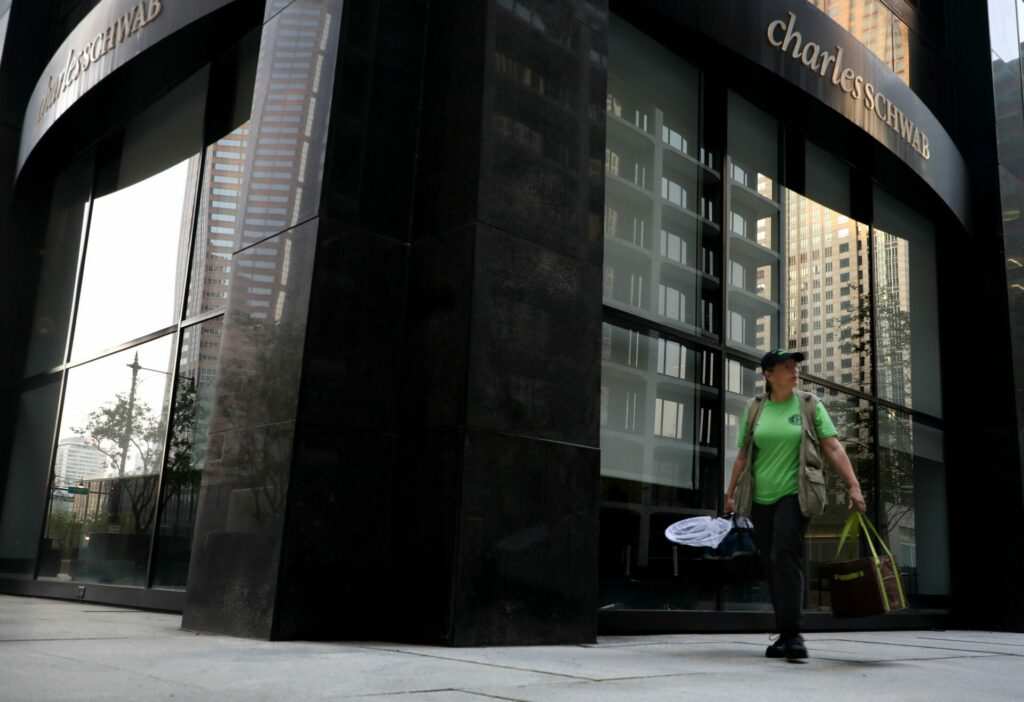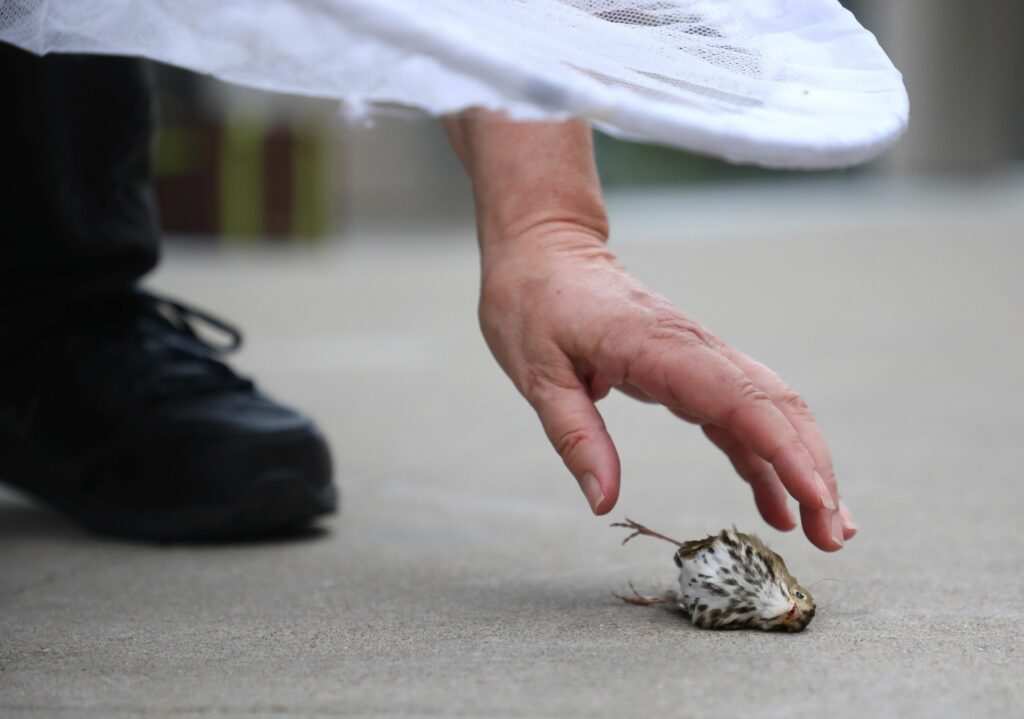Bird migration is on the rise, and so are window collisions.
As temperatures slowly drop in Chicago, 300 millions to 400 million birds are crossing the continent heading south to their nesting grounds for the winter, according to Annette Prince, director and president of Chicago Bird Collision Monitors, a nonprofit dedicated to the respite and protection of migratory birds through daily rescue efforts.
It’s been a busy few weeks for the organization, Prince said. Volunteers at the nonprofit pick up more than 100 birds a day. Most early mornings, she said, a team of a dozen volunteers covers an area of about a mile and a half, responding to calls from people who live and work downtown and have found birds littering the sidewalks and gutters.

They found 36 injured birds and 31 dead birds Thursday morning, she said.
“A huge variety,” Prince said. “Everything from sparrows to bigger birds like woodpeckers. A northern flicker. Cedar waxwings and warblers — a small, insect-eating bird that comes in yellows, browns and reds.”
Bird migration happens in the spring and fall, according to Michael Patrick Ward, a professor in the University of Illinois’ Department of Natural Resources and Environmental Sciences. Fall migration starts in the middle of August and can go through early November, Ward said.
This year’s bird migration started a bit earlier, which he said could be explained partially by the wildfires in Canada that started earlier this summer. Local weather conditions like fog can disorient the birds making their migration routes, many spanning hundreds of miles from the boreal forests in Canada to South America.
“And sometimes at night, they hit windows because they see light and then they fly toward the light,” he said. “Window collisions are something we’re concerned about.”

Chicago is in the middle of the Mississippi Flyway, a round-trip migration bird route that sees over 300 bird species each year. Birds eat all day to save up nutrients and fat to make their long trek at night. But skyscrapers can get in the way.
“It has to be such a foreign world for them because they have really not experienced urban life,” said Prince. “Some of these birds are making their first trip south from forests in Canada. We get a lot of the young birds.”
Volunteers scoop up birds and bring them to Willowbrook Wildlife Center in Glen Ellyn for rehabilitation and care. They also take thousands of dead birds each year to the Field Museum for documentation and research.
Prince said more birds migrate in the fall because offspring born in northern nests join their parents on the journey south. Real-time bird migration numbers can be found online at BirdCast.info, using weather surveillance radar techniques.
To help mitigate collisions, over two years ago Gov. J.B. Pritzker signed the Bird Safe Buildings Act, requiring the implementation of bird-safety features in construction and renovation of state-owned buildings in Illinois. But these efforts don’t make older buildings safer, Prince said.
“Still, we’re hopeful that at least going forward, we’ll have a safe standard of building … that gives birds a chance to avoid dangerous glass areas,” she said.
Ward has been interested in bird migration since observing his dad watch birds in his backyard near Jacksonville.
“They know where they’re going, and then usually they go back to the exact same spot the next year,” he said. “If you start thinking about how far they go, how fast they go and their ability to actually get to the exact spot they want, it’s a pretty amazing feat.”
A loss of bird species would fundamentally change the way ecological systems in Illinois work, said Ward. Birds feed on decomposing animals and plant matter. They control insect populations. They move around nutrients.
Ward said Chicago residents who have the ability should plant native trees in their backyard — serviceberries, pokeweed and dogwoods. Birds in the fall typically feed on fruit, he said.
“It doesn’t take everyone doing it,” he said. “But if 5% of the population does a little bit more, that will lead to conservation.”
He said he likes to go outside at night and listen to the birds calling to each other as they zip by.
___
© Copyright 2023 Tribune Content Agency



